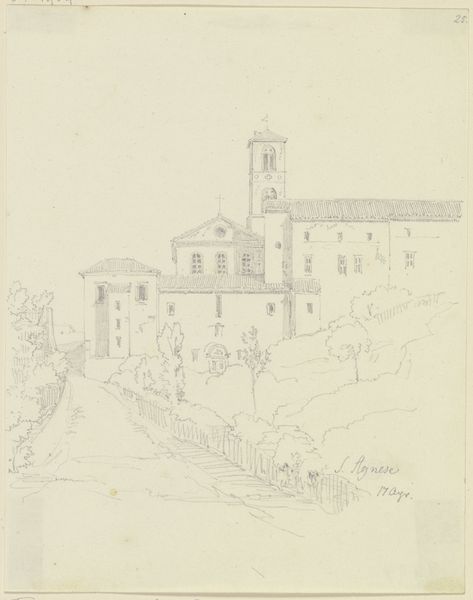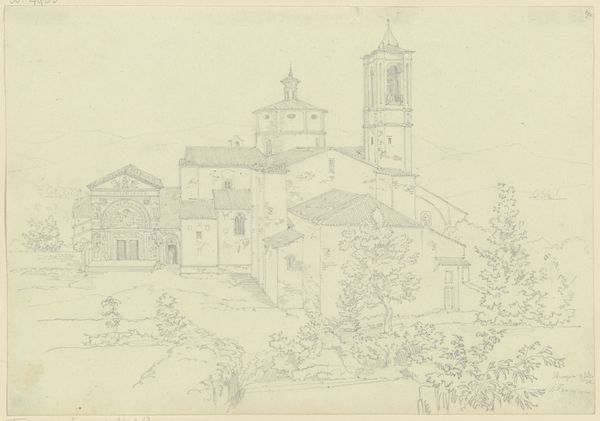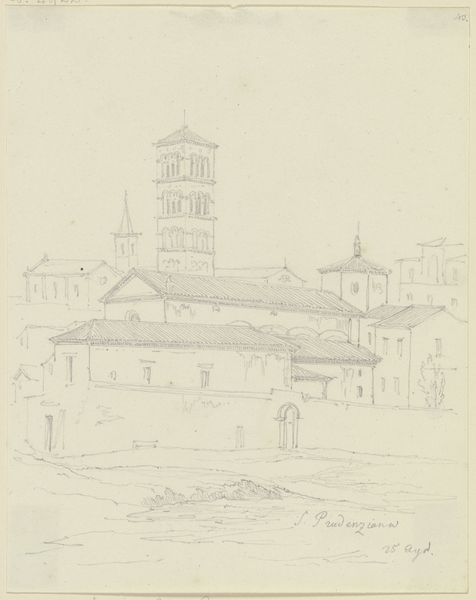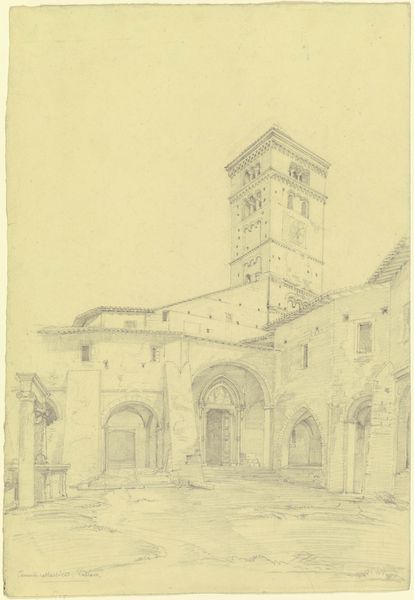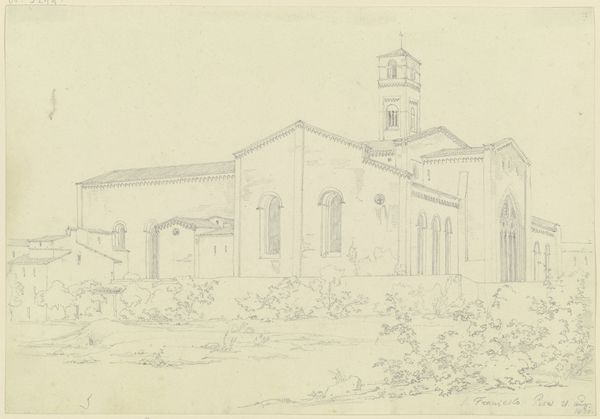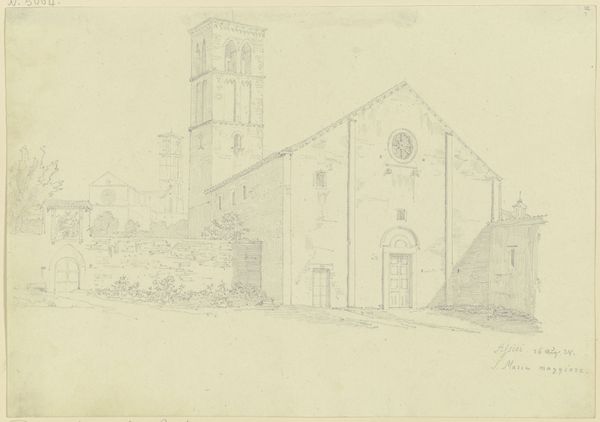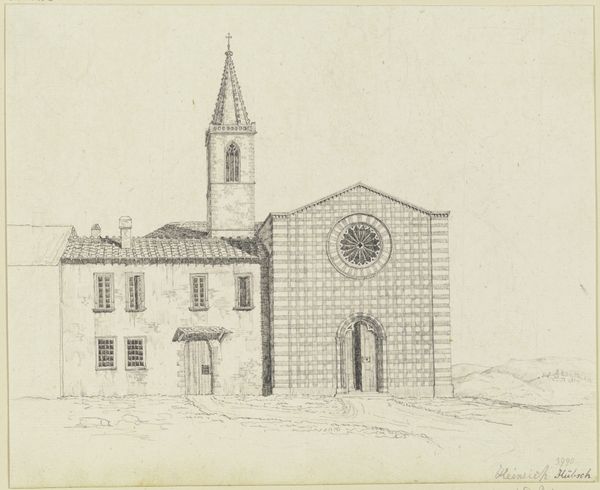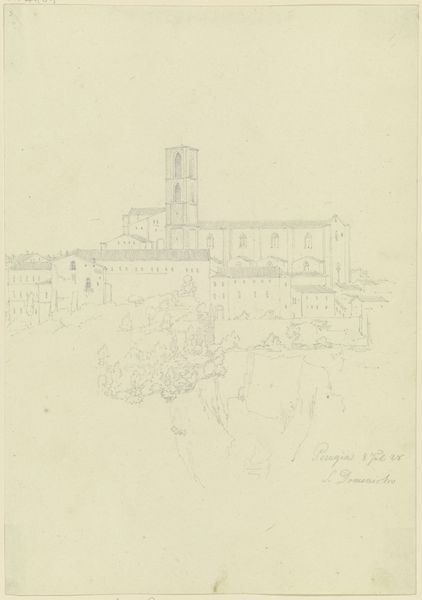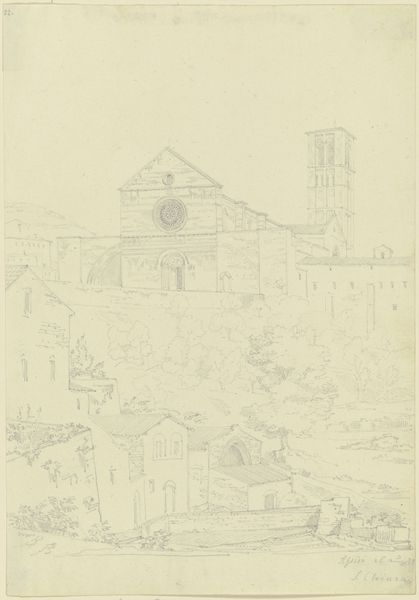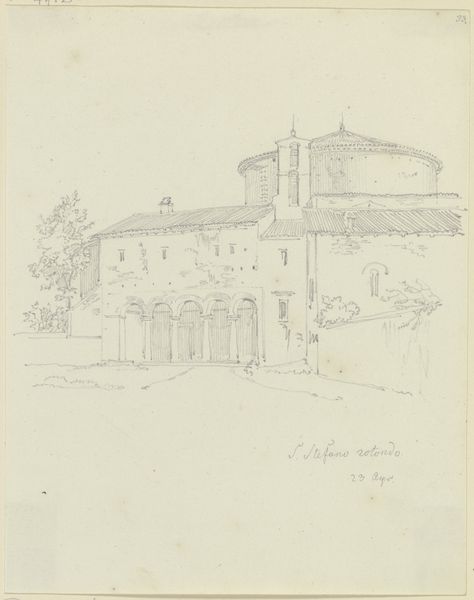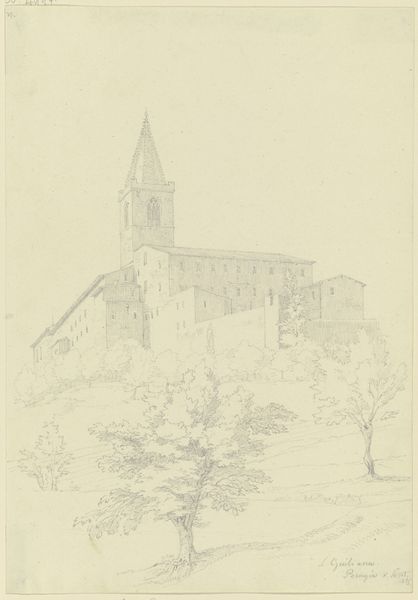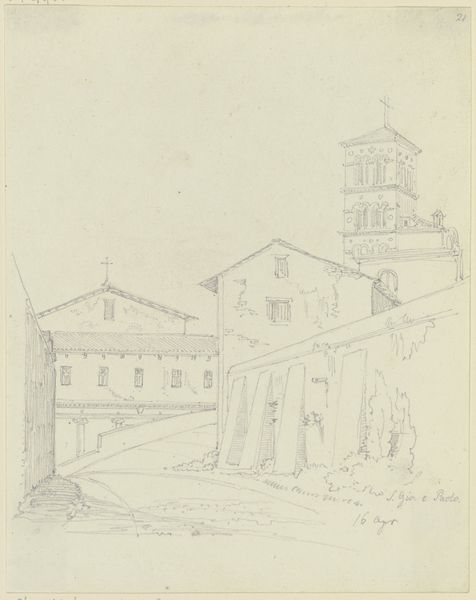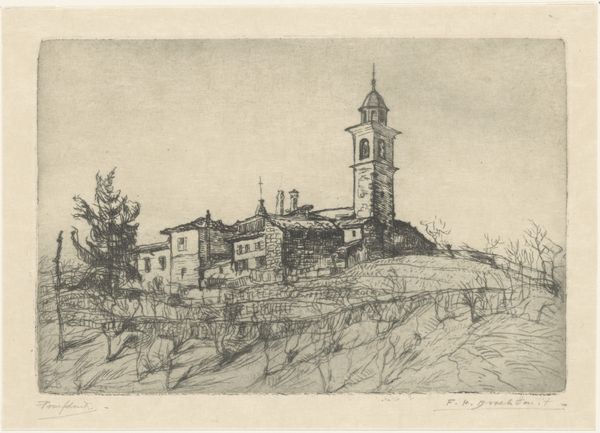
drawing, paper, pencil, architecture
#
architectural sketch
#
drawing
#
aged paper
#
16_19th-century
#
old engraving style
#
landscape
#
etching
#
paper
#
personal sketchbook
#
german
#
idea generation sketch
#
sketchwork
#
pen-ink sketch
#
pencil
#
sketchbook drawing
#
architecture
#
initial sketch
Copyright: Public Domain
Friedrich Maximilian Hessemer made this pencil drawing of Sant’Agnese fuori le mura in Rome. The church itself, built in the 7th century on top of a 4th-century catacomb, speaks of the long, complex history of Christianity in Rome. Hessemer’s drawing participates in this history, but how? Nineteenth-century artists flocked to Italy, seeing it as the origin of Western art. They sought to define themselves in relation to this history, with the ruins of Rome functioning as a reminder of the glory of the past. Hessemer’s drawing suggests a tension between the grandeur of the architecture and the simplicity of the sketch. What does it mean to reduce this towering church to a few lines on paper? Perhaps Hessemer, like other artists, was claiming the past as his own. To understand Hessemer’s work, we can consult letters, travel journals, and exhibition reviews to reconstruct how artists of the time understood their relationship to the past. Art is never created in a vacuum, and historical sources can illuminate the social and institutional forces that shape its meaning.
Comments
No comments
Be the first to comment and join the conversation on the ultimate creative platform.
